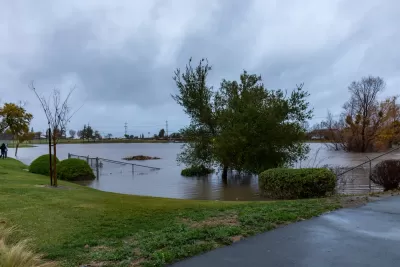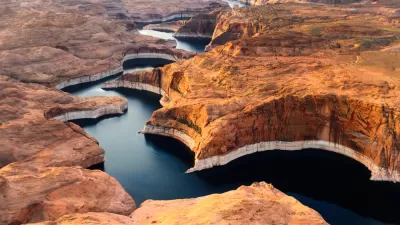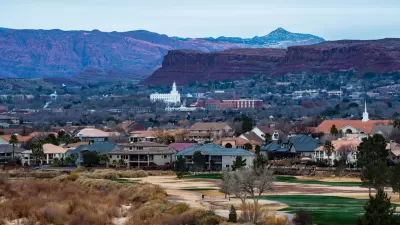Recent storms are bringing plenty of water to parched parts of California, but scientists warn the relief won’t be a long-term solution to longer, drier periods.

Could the massive storms drenching the West Coast this month bring relief to California after three years of drought? “If California’s recent climate history is a guide, not for long,” writes Henry Fountain in the New York Times. While the recent downpours may fill (and in some cases overfill) the state’s reservoirs, the better question, Fountain points out, is how future droughts will play out.
Fountain explains the history of California’s recent drought periods, which have been punctuated by brief periods of extreme rainfall. However, “Drought has returned relatively quickly each time in part because of natural climate variability. Dry years have always happened and will continue to happen.”
Meanwhile, climate change is making longer droughts more likely. “A 2015 study, for example, found that the odds of the state suffering an extreme drought like the one that began in 2012 had doubled as the world warmed over the prior century.” Scientists warn that “the high variability of precipitation in California reduces the likelihood of many consecutive, extremely wet years that could fully break a drought.”
Like much of the Southwest, California has been facing severe challenges to its water supplies as the region’s population grows and water sources like the Colorado River and Mono Lake, where conservationists are lobbying the state to reduce water exports to Los Angeles, dry up.
FULL STORY: Will Storms End California’s Drought? That May Be the Wrong Question

Planetizen Federal Action Tracker
A weekly monitor of how Trump’s orders and actions are impacting planners and planning in America.

Map: Where Senate Republicans Want to Sell Your Public Lands
For public land advocates, the Senate Republicans’ proposal to sell millions of acres of public land in the West is “the biggest fight of their careers.”

Restaurant Patios Were a Pandemic Win — Why Were They so Hard to Keep?
Social distancing requirements and changes in travel patterns prompted cities to pilot new uses for street and sidewalk space. Then it got complicated.

Platform Pilsner: Vancouver Transit Agency Releases... a Beer?
TransLink will receive a portion of every sale of the four-pack.

Toronto Weighs Cheaper Transit, Parking Hikes for Major Events
Special event rates would take effect during large festivals, sports games and concerts to ‘discourage driving, manage congestion and free up space for transit.”

Berlin to Consider Car-Free Zone Larger Than Manhattan
The area bound by the 22-mile Ringbahn would still allow 12 uses of a private automobile per year per person, and several other exemptions.
Urban Design for Planners 1: Software Tools
This six-course series explores essential urban design concepts using open source software and equips planners with the tools they need to participate fully in the urban design process.
Planning for Universal Design
Learn the tools for implementing Universal Design in planning regulations.
Heyer Gruel & Associates PA
JM Goldson LLC
Custer County Colorado
City of Camden Redevelopment Agency
City of Astoria
Transportation Research & Education Center (TREC) at Portland State University
Camden Redevelopment Agency
City of Claremont
Municipality of Princeton (NJ)





























